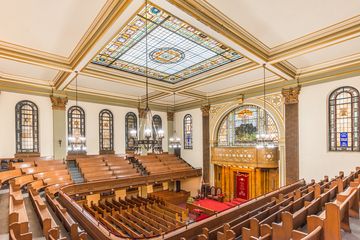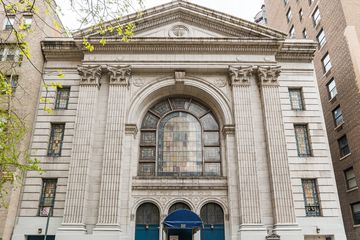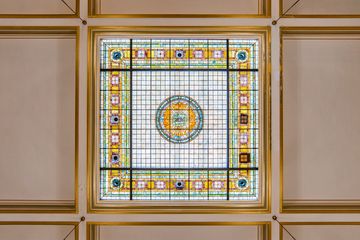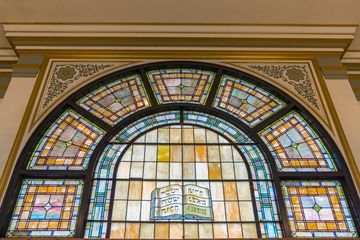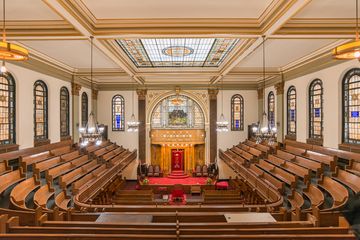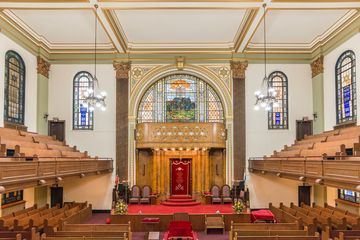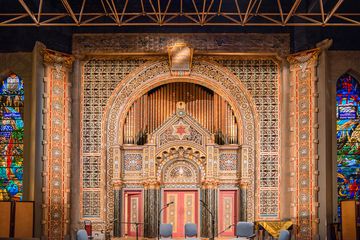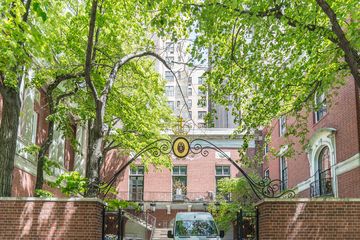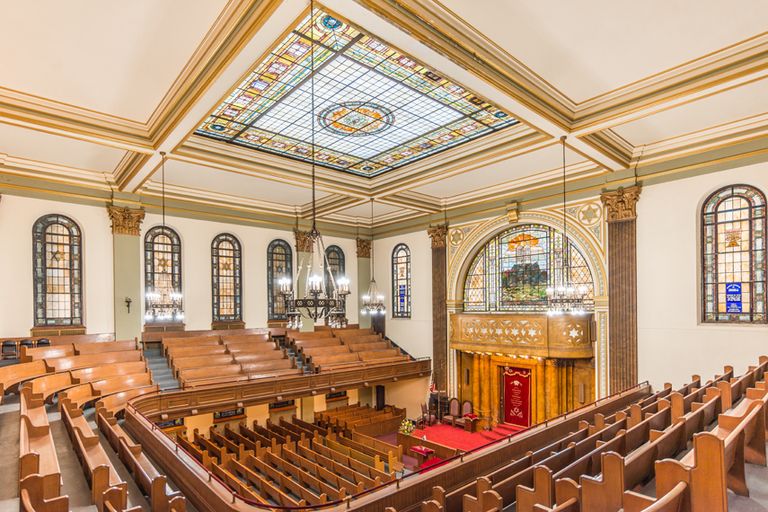
Note: Congregation Shaare Zedek has moved to a new temporary location at the Franciscan Community Center as of 2018.
Although it is unclear exactly what date the congregation was founded, Congregation Shaare Zedek's members pinpoint it to be somewhere between 1837 and1839. Though the synagogue started on Henry Street it “did what most synagogues did at the time,” in the words of board member Lianna, and followed the migration of the Jewish population north to Harlem and then south to the Upper West Side.
The congregation built its current home in 1922. Since the building was finished pre-depression, Lianna admitted that the building is “not fully modest,” designed to be “neo-classical with stained glass as a focal piece.” The sanctuary is highlighted by a greenish-yellow stained glass, even on the ceiling. Though at one time the congregation was bustling, it has since shrunk in size due to the “ebb and flow of the community.” Lianna pointed out that with seventy-five families, “the community is very small and does not really fit the space at all.” However, where many synagogues have members who only come once or twice a year for holidays, an unusually large percentage of the families at Shaare Zedek are active throughout the year. “We’re proud,” Lianna stated with a smile.
The synagogue fills a particular niche in the neighborhood. “We’re a very specific kind of Jewish community, for those looking for a more traditional service,” Lianna explained. Services are conducted in Hebrew, but women play an equal role in the congregation. It is an excellent setting for those whose lives are not entirely centered on Judaism, but prefer their synagogue to be traditional. Lianna chose this synagogue in 2011 with her husband, who practices Judaism very traditionally. She is more liberal in her approach to Judaism, yet knowledgeable, and Shaare Zedek was a good match for them. The congregation has turned out to be ideal for them in many ways. “It’s intimate, but not too intimate.”
The synagogue is led by Jonah Geffen, a rabbi who joined the community in 2015. “He’s a nice person in his soul,” Lianna stated. Though the congregation is a modest size, there is a vast age span. Everyone is represented, from the oldest Holocaust survivors to those who are just out of college. “There are a lot of kids running around on Saturdays,” Lianna said. The synagogue also offers special dinners for young professionals on Fridays. In Lianna’s words, Shaare Zedek represents true “diversity of Jewish expression.”
